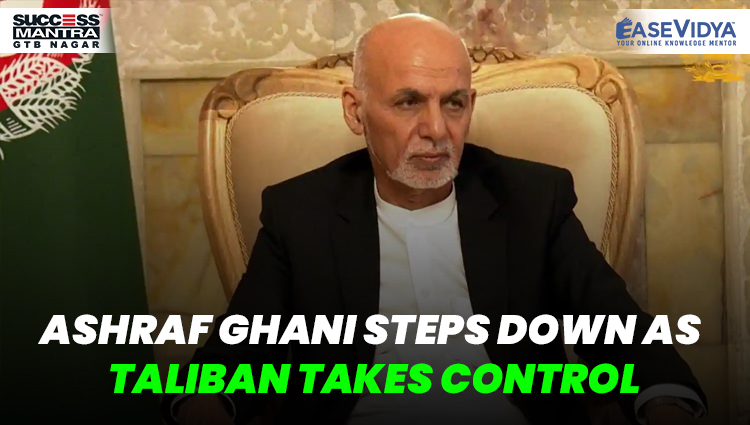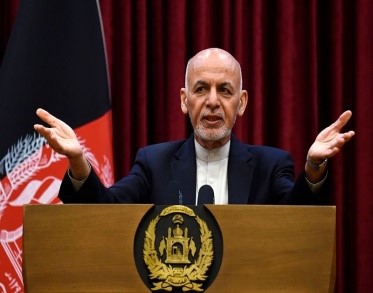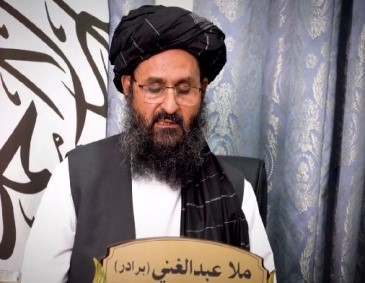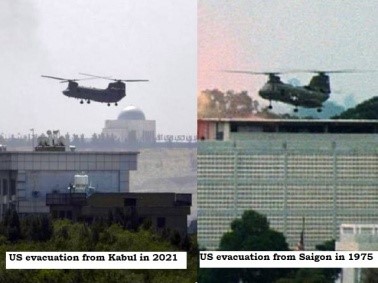
ASHRAF GHANI STEPS DOWN AS TALIBAN TAKES CONTROL
ASHRAF GHANI STEPS DOWN AS TALIBAN TAKES CONTROL

Kabul has fallen! Afghanistan government collapsed on August 15, 2021 after Afghanistan President Ashraf Ghani fled to Tajikistan and Afghan military troops surrendered the capital city, Kabul. Taliban leader Abdul Ghani Baradar is likely to be the new President of Afghanistan. Ghani said in a statement after his escape, "In order to avoid the bloodshed, I thought it was best to get out." This was followed by complete chaos in Kabul with shots sounding in the Kabul airport amidst efforts by other countries to evacuate their citizens from Afghanistan. Civilians were seen fleeing Kabul the moment it became clear that the Taliban is taking over the capital. India also started the process of evacuation of its nationals from Afghanistan with Air India flight AI-243 taking off from Delhi’s Indira Gandhi International airport for Kabul on the morning of August 15th. The flight returned without 129 stranded passengers. Nations such as the US, UK, Germany and Canada are using their troops to evacuate their nationals from Afghanistan. The US Embassy in Kabul has suspended all operations and told Americans to take shelter in the place.
WHAT WILL HAPPEN TO AFGHANISTAN NOW?
Taliban leaders declared on August 16, 2021 that "the war is over." Taliban Commander Abdul Ghani Baradar is likely to become the new President of Afghanistan. Mullah Abdul Ghani Baradar is the co-founder of the Taliban insurgent group. The Taliban has taken control of Afghanistan nearly 20 years after the US-led coalition marched into Kabul. Baradar had said in a statement earlier that the Taliban's victory that saw all cities of the country fall to them in just 10 days was unexpectedly swift and had no match in the world.
WHO IS ABDUL GHANI BARADAR?

Abdul Ghani Baradar is the co-founder of the Taliban in Afghanistan. He was the deputy of Mullah Mohammed Omar. While Haibatullah Akhundzada is the Taliban’s overall leader, Baradar is the political chief and most public face. He had been captured in Pakistan by a team of Inter-Services Intelligence (ISI) and Central Intelligence Agency (CIA) officers in February 2010. He was released at the request of the United States three years ago on October 24, 2018. Baradar has not only emerged as a victor of Afghanistan's 20-year war but his return to power embodies Afghanistan’s inability to escape the bloody shackles of its past. Baradar was born in Uruzgan province in 1968 and raised in Kandahar, the birthplace of the Taliban. He had served the Afghan mujahideen during the war against the Soviet-backed Afghan government in the 1980s. The Russians were driven out in 1992. He helped his former commander and brother-in-law Mohammad Omar found the Taliban in southern Afghanistan in 1994. Baradar had played various military and administrative roles in the five-year regime of the Taliban in Afghanistan. He was deputy minister of defence when the Taliban was ousted by the US and its Afghan allies.
WHO ARE THE TALIBAN: The Taliban is a Deobandi Islamist movement, which is led by young Islamic scholars who are dedicated to the religious purification of the country and the creation of an emirate. Mawlawi Hibatullah Akhundzada is reportedly the leader of the Taliban since 2016.
LATEST UPDATES FROM AFGHANISTAN
The Taliban fighters have entered the presidential palace in Kabul, while Ashraf Ghani and his close aides have fled to Tajikistan. There is a complete collapse of the government, which has triggered panic and chaos in the capital, Kabul. The Kabul airport is a scene of complete chaos with nations scrambling to evacuate their citizens. Many of the frantic Afghans are also searching for a way out of the fallen nation. The United States has been airlifting its embassy personnel to the Kabul airport to evacuate them from the city. The Pentagon is sending additional 1000 US troops to Kabul to help with the deteriorating security situation in Afghanistan's capital city.
COMPARISON WITH FALL OF SAIGON

The fall of Kabul has drawn comparison to the fall of Saigon in 1975. The Fall of Saigon refers to the capture of Saigon, the capital of South Vietnam, by the People's Army of Vietnam in 1975. Saigon's capture had marked the end of the Vietnam War and the start of a transition period to the formal reunification of Vietnam into the Socialist Republic of Vietnam. The US withdrawal from Kabul has been compared with the US withdrawal from Saigon. In fact, a photo comparison is making the rounds that show US evacuation from Kabul in 2021 and US evacuation from Saigon in 1975. The US Secretary of State Antony Blinken has, however, insisted that the Afghan mission to be 'successful' and has rejected the comparison between Kabul and Saigon.
WHAT IS SAIGON?
Thousands of Afghans fleeing Afghanistan, especially evacuation by the United States, have brought back ghosts from the past like Saigon, which also witnessed similar evacuations as North Vietnamese troops overran the city. Phnom Penh was also similar when the US ambassador had fled the city with some 200 other Americans just five days before the city fell to fanatical Khmer Rouge. Saigon is another name for Ho Chi Minh City, which is the largest city in Vietnam, situated in the south. The Fall of Saigon was the capture of Saigon, the capital of South Vietnam by the People's Army of Vietnam (PAVN) on April 30, 1975. The capture of Saigon marked the end of the Vietnam War and the beginning of a transition period that led to the formal reunification of Vietnam into the Socialist Republic of Vietnam. The People's Army of Vietnam under the command of General Văn Tiến Dũng had begun their final attack on Saigon on April 29, 1975. The Army of the Republic of Vietnam (ARVN) forces commanded by General Nguyễn Văn Toàn suffered a heavy artillery bombardment. The People's Army of Vietnam finally occupied the important points of the city and raised their flag over the South Vietnamese presidential palace. The government of unified Vietnam renamed Saigon as Hồ Chí Minh City, to honor late North Vietnamese President Hồ Chí Minh. The capture of Saigon was preceded by Operation Frequent Wind, which comprises evacuation of almost all American civilian and military personnel in Saigon. Thousands of South Vietnamese civilians were also evacuated. The capture of Saigon followed a similar pattern to the capture of Kabul, as the Taliban increased its advances in Afghanistan after the withdrawal of US troops. Similarly in Saigon, the US ground combat units had left South Vietnam two years before the fall of Saigon and were not available to defend Saigon or assist in the evacuation. The evacuation from Saigon is known to be the largest helicopter evacuation in history.
WHY IS SAIGON-KABUL COMPARISON RELEVANT NOW?
The biggest question now is that what will happen to Afghanistan under Taliban rule. Will the Taliban return to its old ways and act like the Vietnamese communists, who ordered mass executions. Will the women in Afghanistan be seen again as possessions of male members and be forbidden from gaining access to education, or will there be a more liberal approach, as promised by the Taliban.
TEST YOURSELF
Q.1 What does the Taliban, insurgent group who take over the control of Kabul in Afghanistan refer to themselves as?
- Islamic Emirate of Afghanistan: ANSWER
- Emirate of Afghanistan
- Political organization of Afghanistan
- None of the above
Q.2 Which of the following was the capital of Afghanistan when the Taliban were in power (between 1996 to 2001)?
- Kabul
- Kandahar: ANSWER
- Bamiyan
- Herat
Q.3 Which of the following leaders is the founder of the Taliban Group in Afghanistan?
- Ashraf Ghani
- Haibatullah Akhundzada
- Mohammed Omar: ANSWER
- Ayman al-Zawahiri
Q.4 Consider the given statements & state which of the following is/are incorrect in the reference to the above mentioned passage?
- They were basically students from Pashtun origin/ areas
- Under the leadership of Mohammed Omar, the movement spread across Afghanistan
- Only I follows
- Only II follows
- Both I & II follows: ANSWER
- None of the following
Q.5 Which of the following is the ideology followed by the Taliban insurgent group?
- Deobandi Islamism
- Pashtunwali
- Both A and B: ANSWER
- None of the above












0 Comment